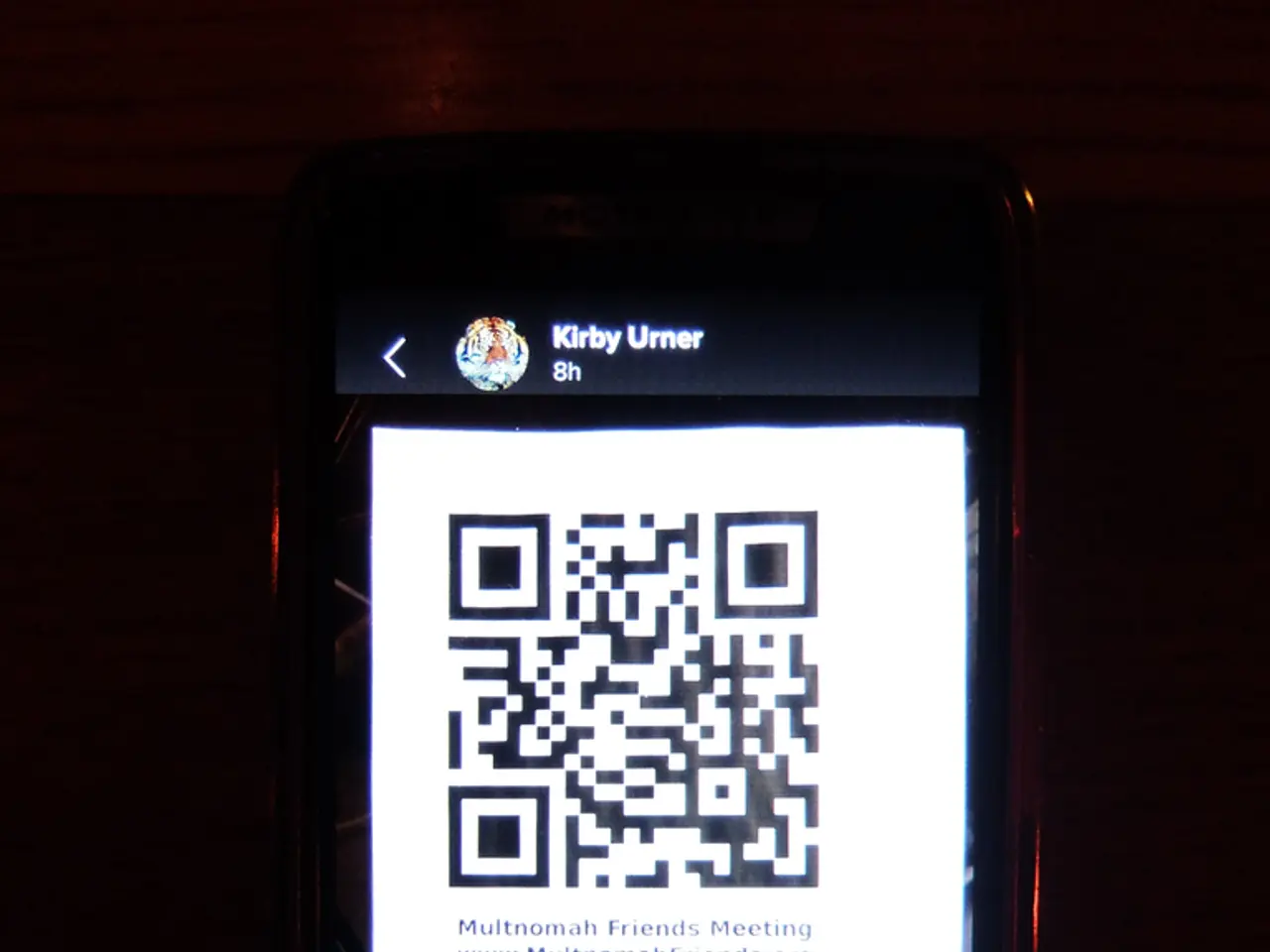"Scanning Pre-verification of QR Codes" or "Pre-checking QR Codes Before Scanning"
In the digital age, it's essential to stay vigilant when it comes to online security. One emerging threat is Quishing, a form of phishing that uses QR codes to redirect users to fake websites. Here's a guide to help you identify and avoid QR code phishing scams.
Be cautious about scanning QR codes from unknown or unsolicited sources, especially in emails, messages, or unusual places. Look for context or explanation about what the QR code is for before scanning; avoid codes without clear purpose or verification. Verify the sender’s legitimacy if the QR code arrives via email or messages by checking for suspicious spelling, domain names, or urgent calls to action.
It's also advisable to use a QR code scanner app that previews the URL and checks its safety before opening. After scanning, examine the website URL and logo carefully to confirm authenticity before entering any personal or login information. Manually typing the site address is safer than clicking through the QR code link.
Two-factor authentication (2FA) can offer an additional layer of security. By enabling 2FA, you can prevent scammers from accessing your account without the extra confirmation, such as a code via SMS or a 2FA app.
Avoid scanning QR codes when you have doubts, especially if found in suspicious physical locations or on documents like fake invoices or posters that may overlay legitimate codes. If you suspect a malicious QR code scan (e.g., unexpected login prompts, strange websites, or authentication requests), immediately change passwords and monitor account activity.
Organizations can also use security tools such as advanced email security, sandboxed file scanning, and endpoint protection with behavioral analysis to detect QR code-based threats, especially when QR codes are embedded in files like PDFs.
Recently, a seller on a used clothing platform fell victim to a Quishing scam, losing over 3,000 euros. The Consumer Advice Centre Brandenburg (VZB) has warned about the risks of Quishing, emphasizing that it's unusual for money to be transferred with an extra payment confirmation. Generally, the payment methods offered on the platform should be used, and if someone insists on handling the payment outside the platform, alarm bells should ring.
In summary, the essence of avoiding Quishing scams is vigilance: don’t scan suspicious QR codes, verify all sources, check URLs before entering data, and protect accounts with 2FA. By following these practices, you can help ensure your online safety.
Use a reliable QR code scanner app to verify the safety of codes and preview their URLs before scanning. Keep in mind that personal and financial information should be safeguarded with two-factor authentication to secure account access.
Maintain caution when dealing with QR codes found in physical locations or on suspicious documents to minimize the risk of falling victim to Quishing scams. While using online marketplaces, follow their provided payment methods to prevent financial loss.




